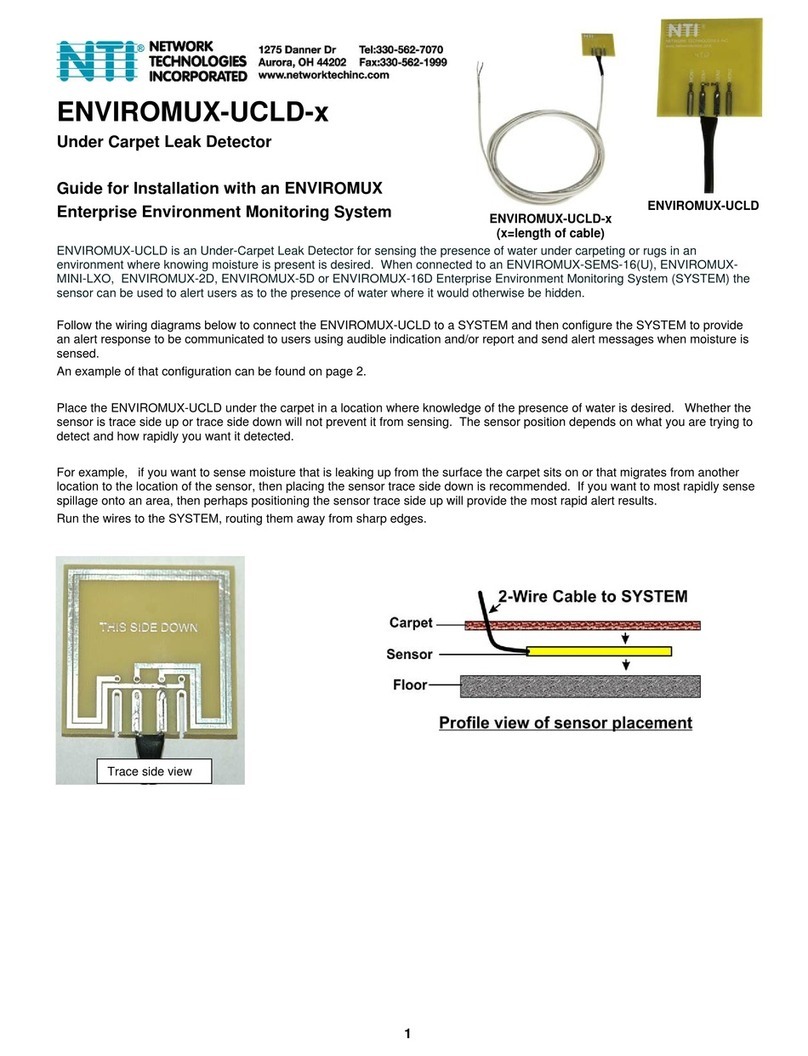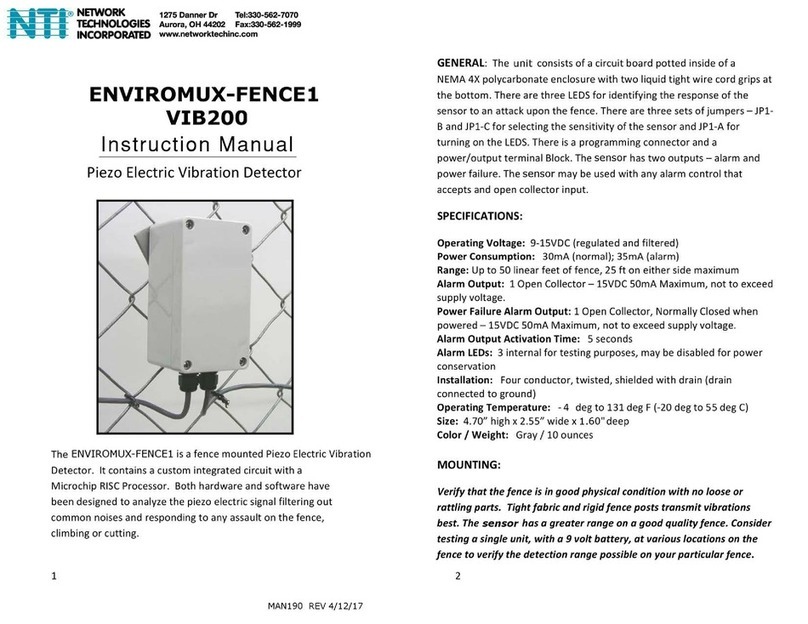
1
E-
CVD
LY-C14
INSTALLATION GUIDE FOR THE
E-ACVDRLY-xxx
AC Voltage Detector
INTRODUCTION
The NTI E-ACVDRLY-xxx detects voltage (50-250VAC) when connected to
an E-16D/5D/2D, E-MINI-LXO, E-MICRO-T(RHP) or E-1W(P)(SYSTEM). A
2-wire sensor cable (6 foot cable included), is used to connect to a
SYSTEM, which can be configured to send alerts based on the presence or
lack of AC voltage.
The E-ACVDRLY-xxx includes an internal relay that closes when sensing
voltage above 60VAC, and opens when sensing 55VAC and below.
E-ACVDRLY-515 includes a NEMA 5-15 Plug for connection to a standard
120V NEMA 5-15 receptacle.
E-ACVDRLY-C14 includes a 250V IEC C14 Socket for connection to a 250V IEC C13 receptacle.
Features:
Monitors the presence of 50-250VAC
2-position screw-terminal connection
Supports 2-wire sensor cable up to 1000 ft1(6 foot cable included)
RoHS and CE certified
MATERIALS SUPPLIED
E-ACVDRLY-yyy Voltage Detector (yyy= 515 or C14)
E-2W-6 (6 foot 2-wire sensor cable)
INSTALLATION
Place the E-ACVDRLY-xxx where it can be plugged into an AC power source (50-250VAC). Connect a 2-wire (16-26 AWG) cable
up to 1000 feet long between the +and ground ( ) terminals on the Voltage Detector and the same labeled “DIGITAL IN”
terminals on the SYSTEM.
1When using 2-wire cables longer than 100 ft, be careful to route cables away from AC wiring, lighting sources, electric motors, or
other electrical devices.
-
CVD
LY-515


























